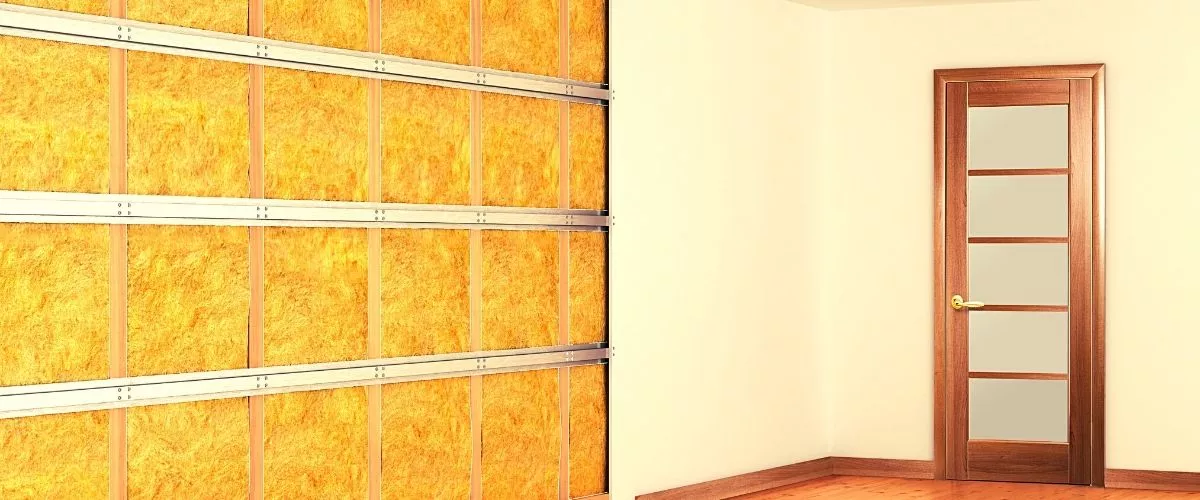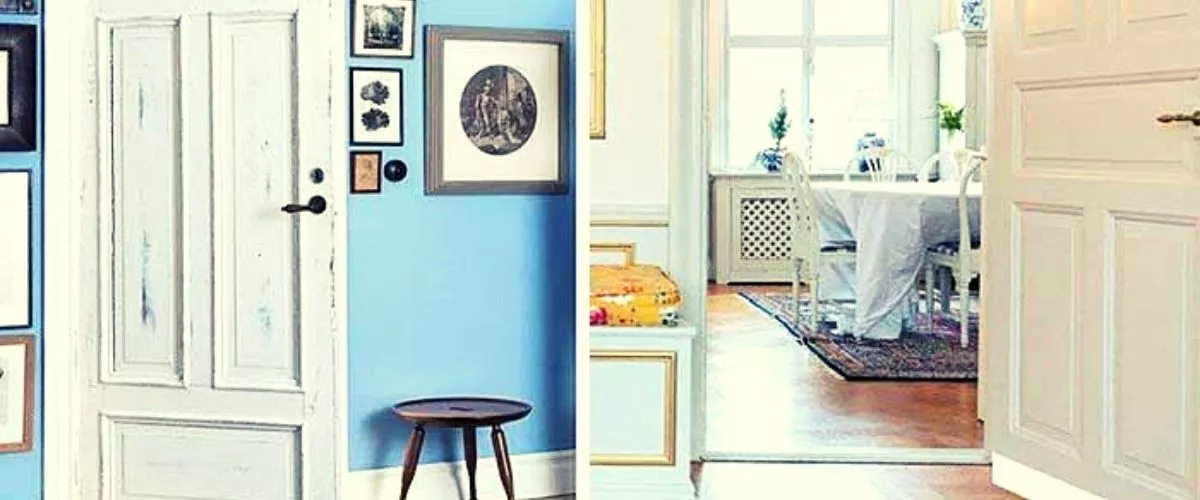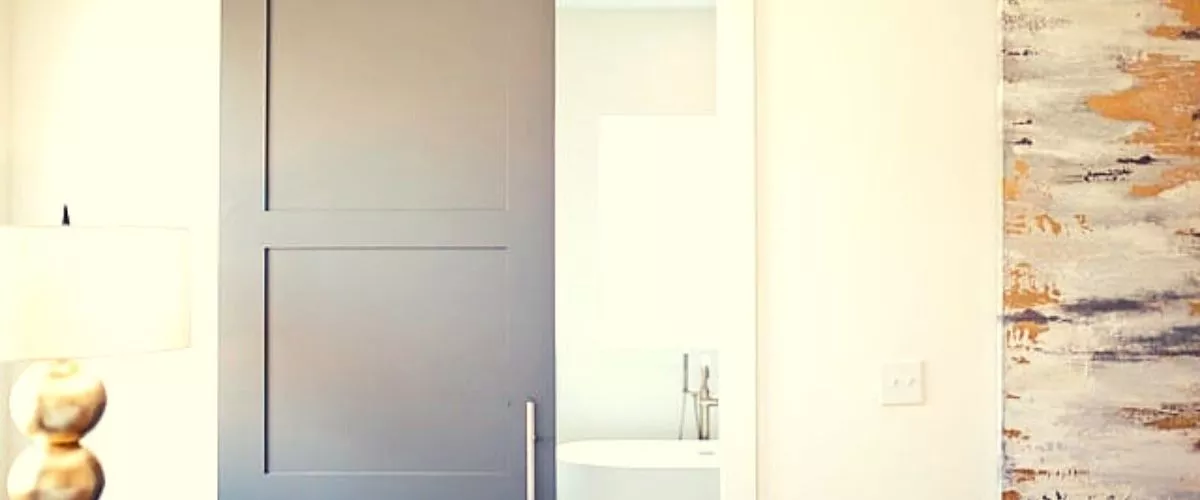Do you want to know how to soundproof a door DIY?
Let’s face it that today’s homes are noisier than ever before, thanks to poor house architecture, spacious floor plans, and a plethora of spectacular yet distracting entertainment equipment.
However, how does one can soundproof a room? Instead, how to soundproof a door with household items?
Every day, we come across a wide range of soundproofing issues.
On the other hand, some people want to know just how soundproofing functions, so this article is here to help you appreciate soundproofing and the theory behind it.
We are also exposed to noise emissions, such as street noise, buzzing electronic goods, disruptive neighbours, and heavy music.
We also expect a degree of background noise, and we are successful at ignoring minimal amounts of noise in our daily lives.
Why Soundproofing a Door Is Important
Doors are often the source of the most noise problems, rendering them an integral component of any auricular therapy.
A doorway is the biggest opening in a wall and the lowest connection in soundproofing.
Noise often escapes from the area outside the entrance. Furthermore, the room at the bottom of the door is more comprehensive than the space outside, and many sounds will flow in.
The fact that most interior doors have a hollow core adds to the problem. While this allows them more cost-effective, it also increases the amount of noise they produce.
And the doorknob system will make certain noises.

Many of these problems may be alleviated by soundproofing the door. Soundproofing your entry will also help to increase the quality of the climate, humidity, and comfort in your soundproofed space.
Insulating the door keeps contaminants and moisture out of the room, making it more convenient to function or rest in.
In a variety of cases, a soundproof door is essential. Some are mentioned below.
- A soundproof door can be a lifesaver if you operate from home and need to focus, particularly if you’re on a tight deadline.
A soundproof door is almost essential if your job requires sound recordings or video production.
- A soundproof door will help you get some much-needed peace if you can hear your neighbours shouting, playing the drums, or blasting music at all hours of the day or night.
- Try soundproofing the door whenever you play an instrument, listen to music loudly, play a video game at the maximum pitch, or need to utilize sound features while working from home.
- Soundproofing a door often has the added advantage of providing temperature insulation. Many of the soundproofing equipment and fabrics often have insulation toward high temperatures.
As a result, the expense of heating and cooling the freshly soundproofed space would almost certainly be lower.
How to make a door soundproof DIY
Complete soundproofing of a door necessitates substantial modifications to the original door structure as well as time-consuming building.
The door and its components will weigh anything between 300 and 500 pounds. For specific budgets, purchasing a solid-core or acoustically rated door is often prohibitively costly.
So, what’s the best way to soundproof a door?
Here is several cost-effective, time-saving, and energy-saving and best way to soundproof a door.
- A wooden panel should be included.
- Soundproofing rubber can be added.
- Weatherstripping and a door gasket should be mounted.
- Include a door sweeper that operates automatically.
- Acoustic panels can be included.
- Both gaps and cracks should be sealed
- Make use of a sound-isolating blanket
- Place a rug on the floor
- Soundproof curtains can be purchased.
- Use a heavily loaded vinyl to dampen the noise.
- Purchase a solid replacement door.

How to make a bedroom door soundproof DIY?
Life outside your bedroom may be very chaotic. Whether it’s your dog barking at the rustling leaves outside or your teenagers concentrating on blasting their music at the maximum pitch.
All the noise bouncing about inside and outside the house will find it challenging to have a good night’s sleep.
Here are simple methods for how to make a bedroom door soundproof DIY.
- Block the pace between the door and the frame
- Improve the look of your bedroom door
- Sound can be stored in the cloud.
- Sound-capturing curtains should be rearranged in the space.
- Construct a Sound Barrier
- Panelling that is calm and relaxing
- Give importance to almost everything
How to soundproof a door with household items
Most citizens have to think about soundproofing a space at home, which may be problematic without professional materials. These products, though, are costly and often difficult to come by.
You can soundproof a space partly with household items, but it won’t be fully soundproof unless you use items designed especially for that reason.
Since soundproofing entails putting more insulation between you and exterior noise outlets, it’s essential to concentrate on windows and points of entrance, such as door cracks.
Here are some ways saying how to soundproof a door DIY.
- To minimize sound and vibration, cover the floor with dense flooring.
- Couch cushions or pillows may be stuffed into window zones, or a mattress can be placed against the walls.
- Heavy drapes can be draped over both windows and walls; the thicker and heavier the drapes, the more potent.
- It is best to cover any surface entirely, but the ceiling can be challenging to protect.
- Thick covers or quilts are the most readily accessible method of soundproofing the ceiling.
- Screw into the ends of the couch cushions or pillows to secure them in the upper and lower corners.
How to soundproof a wooden door
The wooden door is more costly than hollow core doors because they’re mainly constructed of composite wood, making them incredibly heavy.
These doors are more expensive than open core doors, but they do a better job of soundproofing and have more excellent finishes.
To get away from the noise and chaos, here is how to soundproof a wooden door.
- Fill up all the cracks and gaps.
- Tape the door with weather stripping tape.
- Door gaskets are a good option.
- Use a soundproof blanket to keep the noise at bay.
- Use a sweep to open the door.
- Place a rug on the floor.
- Soundproofing curtains are a good investment.
- Turn down the volume on the other side.

How to make a DIY soundproof door blanket
Blankets are excellent for soundproofing. However, you must know how to handle them properly.
We’ve put together a list of nine ways to soundproof your space with blankets that we’ve personally checked and tried.
The below are the easiest methods of how to make a DIY soundproof door blanket. Follow them carefully and say goodbye to the sounds in your bed.
- The simplest thing you can do is spread a blanket on the concrete.
- If you’re having trouble with noises from the floor above you, hang covers from your ceiling.
- Appliances that are so loud can be covered.
- Cover the furniture by covering it.
- Your blankets should be attached to the walls
- Place the blankets on top of the doors.
- Be sure the windows are covered.
- Soundproof the noise source, such as a kitchen garage, a room with chairs, or an industrial space with noisy appliances.
- Choose the most appropriate technique for your lifestyle.
How to soundproof a bedroom
Adding furniture and natural decor to your space is one of the simplest ways to block unwelcome sound in a home.
Hard surfaces, such as hard flooring or existing blank walls, represent sound. Here are the most cost-effective ways on how to soundproof a bedroom
- Use drapes and other window treatments.
- Area rugs can be included.
- Insulate sound-absorbing materials.
- An MLV acoustic insulation and one or two layers of soundproofing drywall can be used to cover an open wall.
- Over the existing wall or ceiling surface, install an MLV acoustic shield and a sheet of soundproofing drywall.
- When building fresh drywall over existing, use a noise-proofing compound such as Green Glue. It is a caulk-like substance that helps to minimize friction transmission between drywall layers.
- Install soundproofing drywall over the original surface and cover it with resilient channels.
- Install a fine, thick pad under wall-to-wall carpeting
- Upholstered furniture should be included.

Despite assertions to the contrary, decorative objects such as wall hangings and soft furnishings can do nothing to keep noise out of a bedroom.
They will effectively reduce the amount of noise produced inside the space. It is accomplished by absorbing sound waves and reducing echo.
Medium, heavily textured materials, on the other hand, do much better than rigid, smooth materials in this regard.
Every décor function you incorporate, from upholstered furniture and tapestries to area rugs and throw pillows, can help to reduce noise if you keep this law of how to soundproof a door DIY in mind.
Conclusion
Sound bounces off the floor and ceiling in non-carpeted rooms, reverberating across the house.
To know how to make a door soundproof DIY, you need to follow the abovementioned steps. Whether you’re constructing a new home or renovating one with open walls, apply insulation to common walls within the house.
Insulation not only adds a barrier of heat resistance but also dampens vibrations.
For soundproofing benefits, apply a second layer of sheetrock to shared walls in a laundry space, a master bedroom, or a child’s room.
Hopefully, you have got a unique and best way to soundproof a door with the help of this article, and I am pretty sure you must have decided which one you want to apply.
READ ALSO: HOW TO REMOVE SILICONE CAULK?
